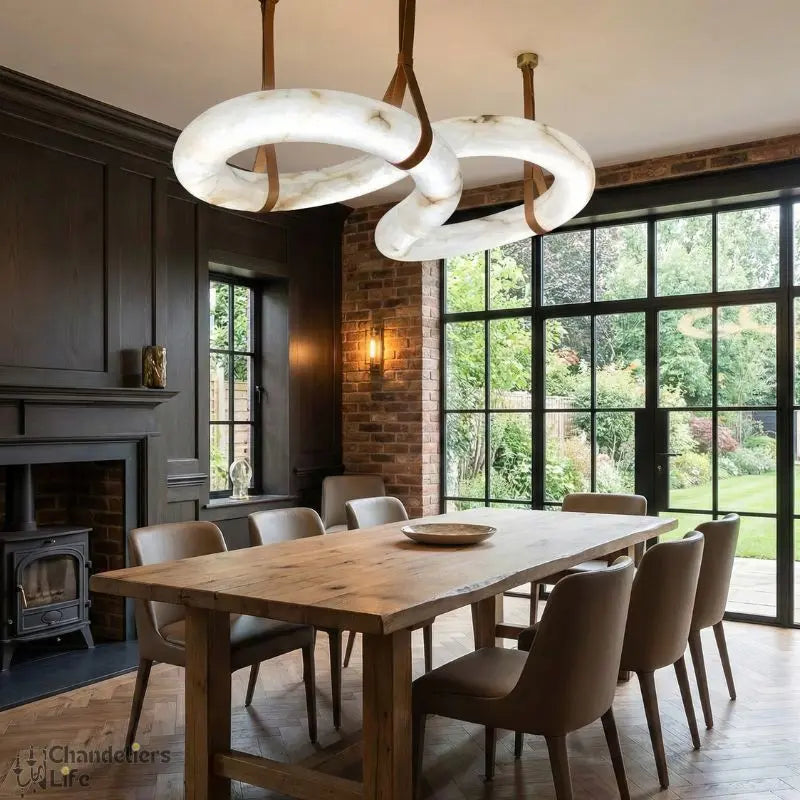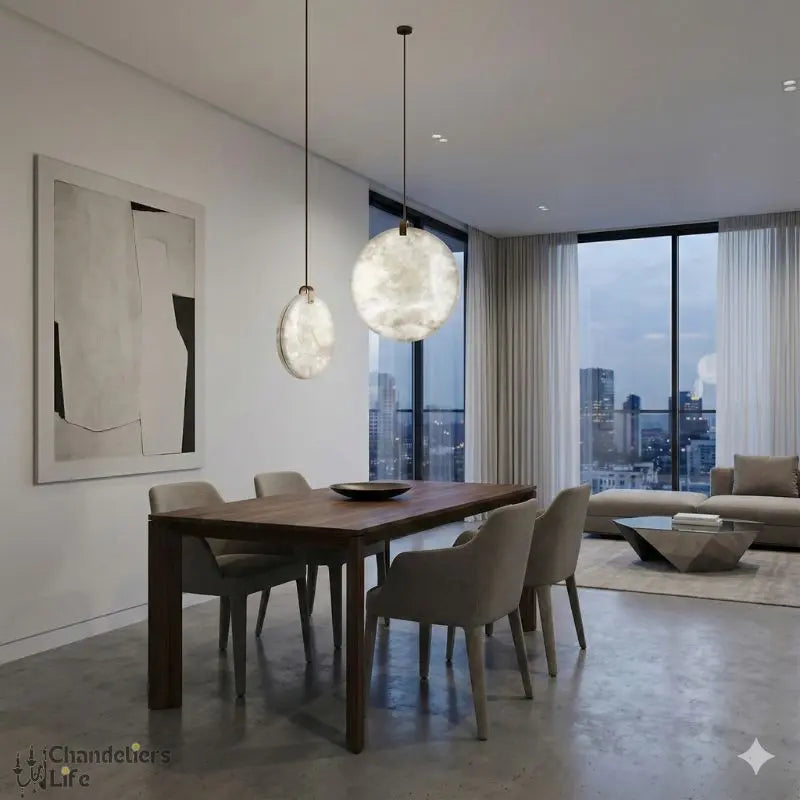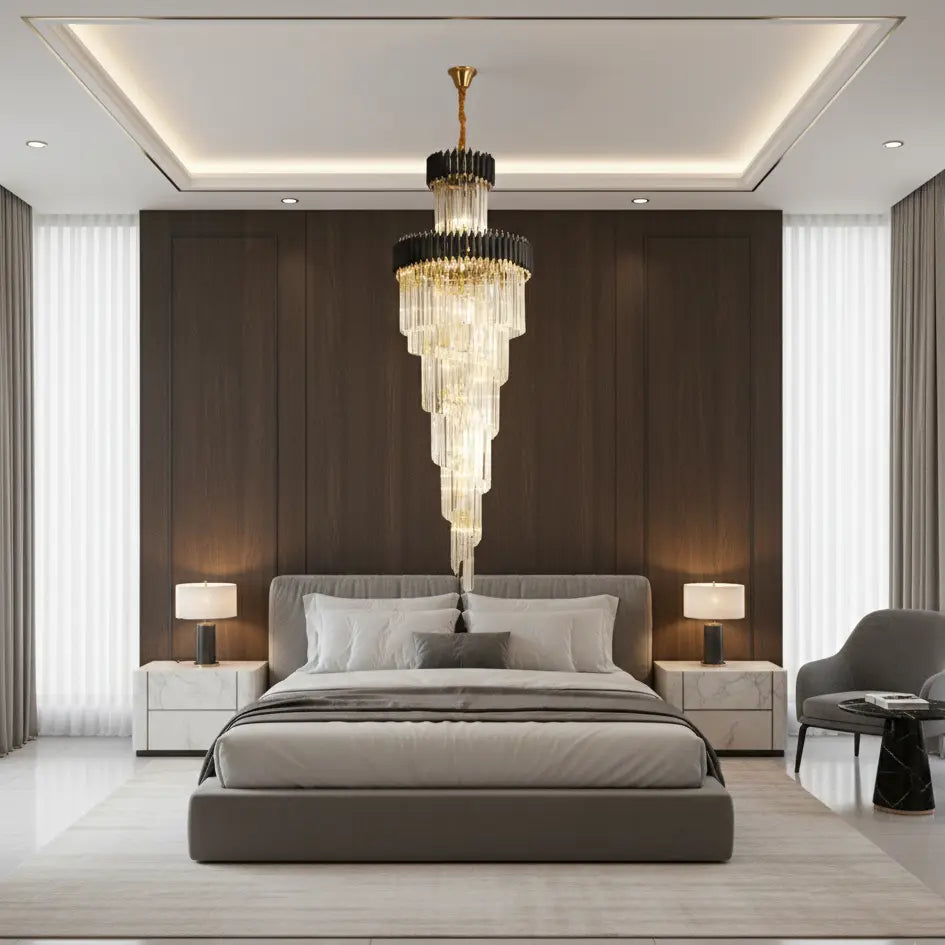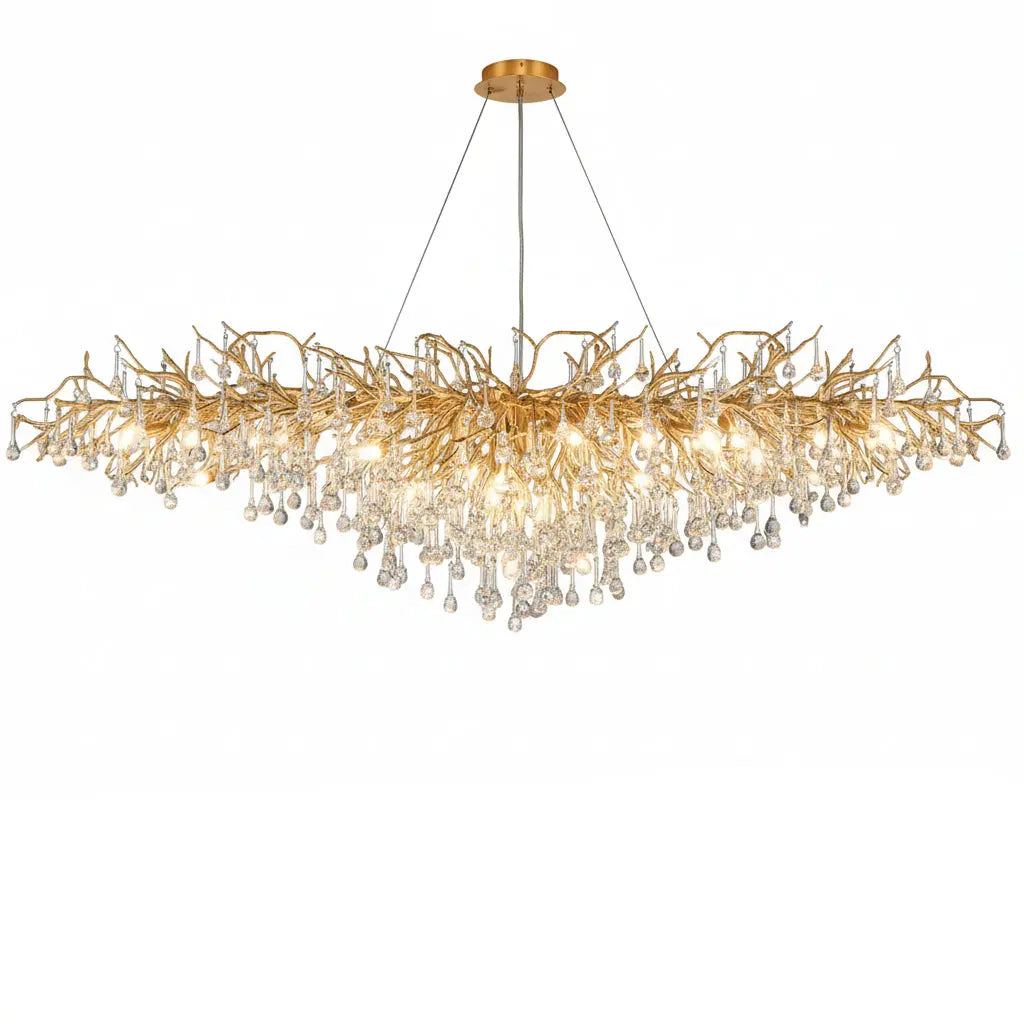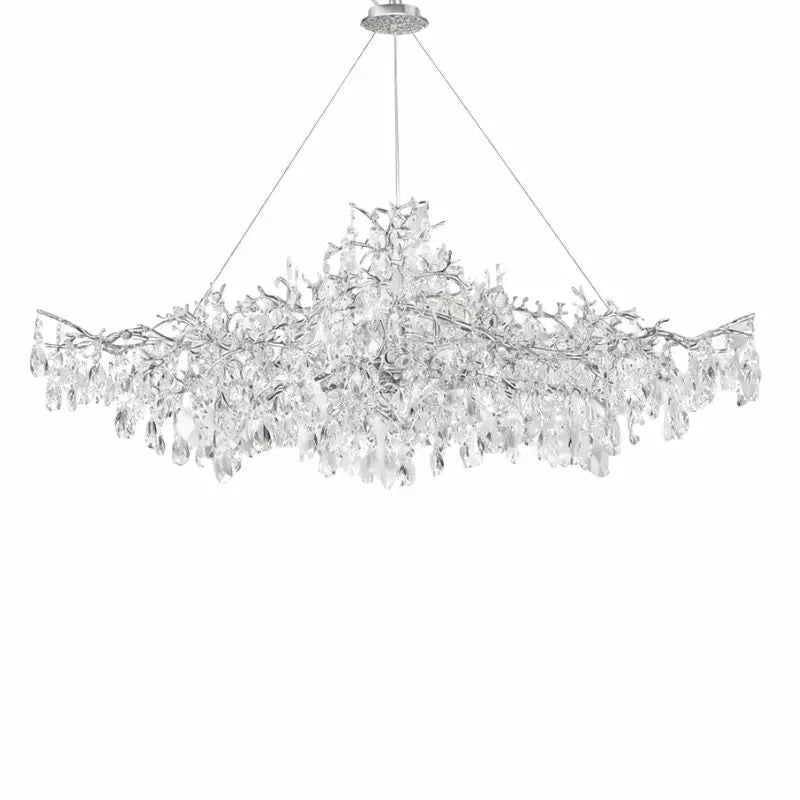Coastal interior design is all about bringing the calm and beauty of the beach into your home. This style focuses on light colors, natural materials, and a relaxed atmosphere that makes you feel like you're on vacation every day. Whether you live near the ocean or just love the beach vibe, this guide will help you create a space that is both cozy and stylish, reflecting the soothing essence of coastal living.
Key Takeaways
- Coastal design uses soft colors inspired by the beach, like light blues, sandy beiges, and crisp whites.
- Natural materials like wood and rattan are essential for creating a warm, inviting space.
- Furniture should be comfortable and arranged to encourage easy movement and conversation.
- Decorate with coastal-themed accessories, like seashells and beachy art, to enhance the vibe.
- Good lighting is key; use natural light and choose fixtures that complement the airy feel of coastal design.
Understanding the Basics of Coastal Interior Design
Coastal interior design is all about bringing the serenity of the beach into your home. This style captures the essence of seaside living, creating spaces that feel light and airy. Here’s a closer look at its key aspects:
Defining Coastal Interior Design
Coastal design reflects the beauty of the ocean and shore. It emphasizes:
- Light colors like whites and soft blues.
- Natural materials that mimic the seaside, such as wood and rattan.
- An overall relaxed vibe that invites comfort.
Key Characteristics of Coastal Style
The main features of coastal design include:
- Open spaces that allow for easy movement.
- Large windows to let in natural light.
- Simple furnishings that are both stylish and comfortable.
The History and Evolution of Coastal Design
Coastal design has evolved over the years, influenced by various regions. It started with traditional beach houses and has grown to include:
- Modern interior design elements that blend with coastal themes.
- Mid-century modern interior design influences that add a fresh twist.
- A focus on sustainability, using eco-friendly materials.
As you explore coastal design, remember that it’s about creating a space that feels like a permanent vacation. Let the natural beauty of the seaside guide your choices!
Choosing the Right Color Palette for a Coastal Home
Inspiration from Nature
The color palette is a key part of coastal design, inspired by the beauty of the beach. Here are some colors you might consider:
- Whites and Neutrals: Soft whites and sandy beiges create a calm base.
- Ocean Blues and Greens: Shades that remind you of the sea and sky add depth.
- Accent Colors: Pops of coral or seafoam green can bring energy to your space.
Popular Coastal Colors
Here’s a quick look at popular coastal colors:
| Color Type | Description |
|---|---|
| Sandy Beiges | Warm tones that evoke sun-kissed sands. |
| Crisp Whites | Clean and fresh, mimicking sea foam. |
| Seashell Pinks | Soft pinks that add warmth and charm. |
Tips for Balancing Colors in Coastal Design
To create a harmonious look:
- Choose a Base Color: Start with a neutral base.
- Add Layers: Introduce blues and greens gradually.
- Incorporate Accents: Use bright colors sparingly for a pop.
A well-chosen color palette can transform your home into a serene retreat, making it feel like a coastal escape.
By focusing on these elements, you can create a beautiful coastal home that feels both inviting and refreshing. Remember, the goal is to capture the essence of the beach, making your space a true reflection of coastal living.
Incorporating Natural Materials and Textures
Using Wood and Rattan
Natural materials are essential in coastal design. Wood and rattan are popular choices that bring warmth and texture to your space. Here are some ways to incorporate them:
- Wooden furniture: Look for pieces made from light, weathered wood that mimic driftwood.
- Rattan accents: Use rattan for chairs, tables, or decorative items to add a beachy feel.
- Layering textures: Combine smooth surfaces with rough, natural fibers for depth.
Selecting Coastal Fabrics
Fabrics play a crucial role in creating a coastal vibe. Here are some fabric ideas:
- Linen and cotton: These breathable materials are perfect for curtains and upholstery.
- Coastal prints: Choose fabrics with seashells or ocean motifs for throw pillows and table linens.
- Sheer curtains: They allow natural light to filter in while maintaining privacy, creating an airy atmosphere.
Adding Organic Elements
Incorporating organic elements can enhance the coastal feel of your home. Consider these options:
- Indoor plants: Use plants that thrive in coastal environments to bring life indoors.
- Natural decor: Items like driftwood, seashells, or coral can serve as beautiful accents.
- Artwork: Choose pieces that reflect the ocean or beach scenes to tie the theme together.
By blending these materials and textures, you can create a relaxed and inviting coastal atmosphere that feels both stylish and comfortable. Natural elements help to connect your interior with the beauty of the seaside, making your home a true coastal retreat.
Furniture and Layout Tips for Coastal Interiors
Choosing Coastal Furniture
When selecting furniture for a coastal interior, comfort and style should go hand in hand. Here are some key pieces to consider:
- Slipcovered sofas in light, washable fabrics for easy maintenance.
- Weathered wood dining tables that bring a rustic charm.
- Woven rattan or wicker accent chairs to add texture.
Optimal Furniture Placement
To create an inviting atmosphere, furniture placement is crucial. Here are some tips:
- Arrange seating to encourage conversation and maintain clear sightlines.
- Use minimal window treatments to maximize natural light.
- Position furniture to create open pathways, enhancing the airy feel of the space.
Creating Open and Airy Spaces
Coastal design thrives on openness. Here’s how to achieve that:
- Incorporate large windows or sliding doors to connect with the outdoors.
- Choose light, reflective surfaces to amplify natural light.
- Layer different textures to add depth without cluttering the space.
Embracing a coastal style means bringing the outdoors in. Use natural materials and colors to create a serene environment that feels like a beach getaway.
Summary Table of Key Elements
| Element | Description |
|---|---|
| Furniture Style | Comfortable, inviting, and easy to maintain |
| Color Palette | Soft blues, sandy beiges, and whites |
| Textures | Natural fibers, weathered woods, and linens |
Accessorizing with Coastal-Inspired Decor
Selecting Artwork and Wall Decor
When it comes to coastal-inspired decor, artwork plays a vital role. Here are some ideas:
- Choose seascapes or abstract pieces that reflect water and sand.
- Incorporate natural elements like driftwood, seashells, or coral as decorative accents.
- Use textiles with subtle coastal motifs or stripes to enhance the theme.
Incorporating Nautical Elements
Nautical decor can add charm to your space. Consider these accessories:
- Nautical clocks and barometers that are both functional and decorative.
- Anchor-themed items, such as wall art or throw pillows.
- Decorative ropes and knots that can frame mirrors or serve as curtain tiebacks.
Using Plants and Greenery
Bringing the outdoors in is essential for a coastal feel. Here are some tips:
- Use indoor plants that thrive in coastal environments, like succulents or ferns.
- Choose organic shapes for pots and planters to maintain a natural look.
- Incorporate fresh flowers in soft colors to brighten up the space.
Remember, balance is key! Avoid overwhelming your space with too many beach-themed items. Instead, focus on a few carefully chosen pieces that enhance the coastal vibe without cluttering your home.
By thoughtfully selecting decor, you can create a serene and inviting atmosphere that reflects the beauty of coastal living. Whether you live in a beach house or a mid-century modern home, these tips will help you achieve a stylish coastal look.
Lighting Solutions for Coastal Interiors
Maximizing Natural Light
To create a bright and airy coastal space, natural light is essential. Here are some tips to enhance it:
- Use large windows or sliding glass doors to let in as much sunlight as possible.
- Opt for minimal window treatments, like sheer curtains, to maintain privacy while allowing light to filter through.
- Choose light-colored walls and reflective surfaces to amplify the brightness in the room.
Choosing Light Fixtures
Selecting the right light fixtures can elevate your coastal design. Consider:
- Nautical-inspired fixtures like lantern-style chandeliers or pendant lights that evoke a maritime feel.
- A unique marble chandelier can add a touch of elegance and sophistication to your space.
- Bamboo lamps are a great eco-friendly option that combines natural beauty with modern design.
Creating Ambiance with Lighting
Lighting can set the mood in your coastal home. Here are some ideas:
- Use dimmable lights to adjust the brightness according to the time of day.
- Incorporate table lamps and floor lamps for cozy corners.
- Layer different types of lighting, such as ambient, task, and accent lights, to create depth and warmth.
Lighting plays a crucial role in making your coastal home feel inviting and serene. By maximizing natural light and choosing the right fixtures, you can transform your space into a relaxing retreat.
Regional Variations in Coastal Interior Design
Coastal interior design varies greatly by region, each style showcasing its own unique features:
New England Coastal Style
- Darker woods are often used, giving a more traditional feel.
- Nautical elements like lighthouses and sailboats are common.
- The color palette includes deep blues and whites, reflecting the ocean and sky.
Mediterranean Coastal Style
- This style incorporates terracotta tones and ornate details.
- Expect to see arched doorways and tiled surfaces that evoke warmth.
- Colors are often sun-washed, with soft yellows and earthy hues.
Tropical Coastal Style
- Emphasizes bold colors and lush, tropical motifs.
- Furniture is often made from light woods and features vibrant patterns.
- Decor includes elements like palm leaves and bright floral prints.
Scandinavian Coastal Style
- Combines coastal elements with minimalist Scandinavian design.
- Features light woods and a neutral color palette, focusing on simplicity.
- Emphasizes functionality and comfort, often with cozy textiles.
Coastal design is not just about the beach; it’s about creating a space that feels like a retreat, no matter where you are.
By understanding these regional variations, you can better appreciate the diverse influences that shape coastal interior design. Whether you prefer the luxury home design of a Mediterranean villa or the modern home design of a Scandinavian retreat, there’s a coastal style for everyone!
Coastal interior design varies greatly from one region to another, reflecting local culture and nature. Whether you’re drawn to the bright colors of a beach house or the calm tones of a seaside cottage, there’s a style for everyone. Explore how these unique designs can transform your home. Visit our website to discover stunning chandeliers that can elevate your coastal decor!
Final Thoughts on Coastal Interior Design
In conclusion, transforming your space with coastal design can create a relaxing and inviting atmosphere that feels like a beach getaway. By using soft colors, natural materials, and personal touches, you can make your home reflect the beauty of the seaside. Remember, the key is to blend your style with coastal elements, ensuring your space is both unique and comfortable. So, whether you live near the ocean or just love the beach vibe, embrace these ideas to turn your home into a coastal haven.
Frequently Asked Questions
What is coastal interior design?
Coastal interior design is a style that brings the feel of the beach into your home. It uses light colors, natural materials, and a relaxed vibe to create a peaceful space.
What colors are best for coastal design?
Popular colors for coastal design include soft blues, sandy beiges, and crisp whites. These colors mimic the sea and sand, creating a calming atmosphere.
How can I use natural materials in my coastal decor?
You can incorporate natural materials like wood, rattan, and linen. These materials add warmth and texture, making your space feel more inviting.
What furniture works well in coastal interiors?
Look for comfortable and casual furniture. Slipcovered sofas, weathered wood tables, and wicker chairs are great choices for a coastal look.
How can I accessorize my coastal space?
Accessorize with beach-themed decor like seashells, nautical artwork, and plants. These elements will enhance the coastal feel of your home.
What lighting is best for coastal interiors?
Use light fixtures that maximize natural light, such as large windows or light-colored lamps. This helps create a bright and airy atmosphere.







